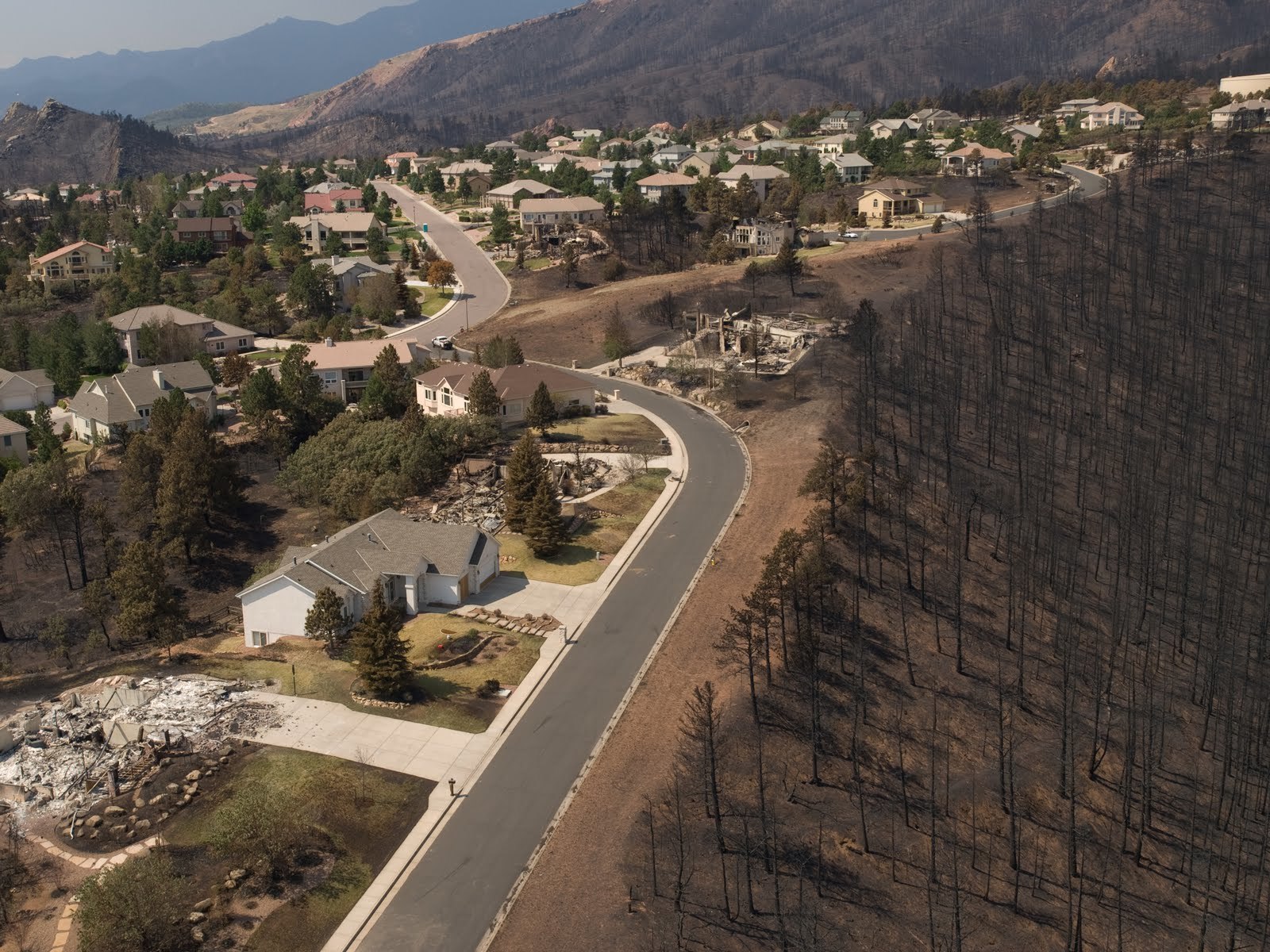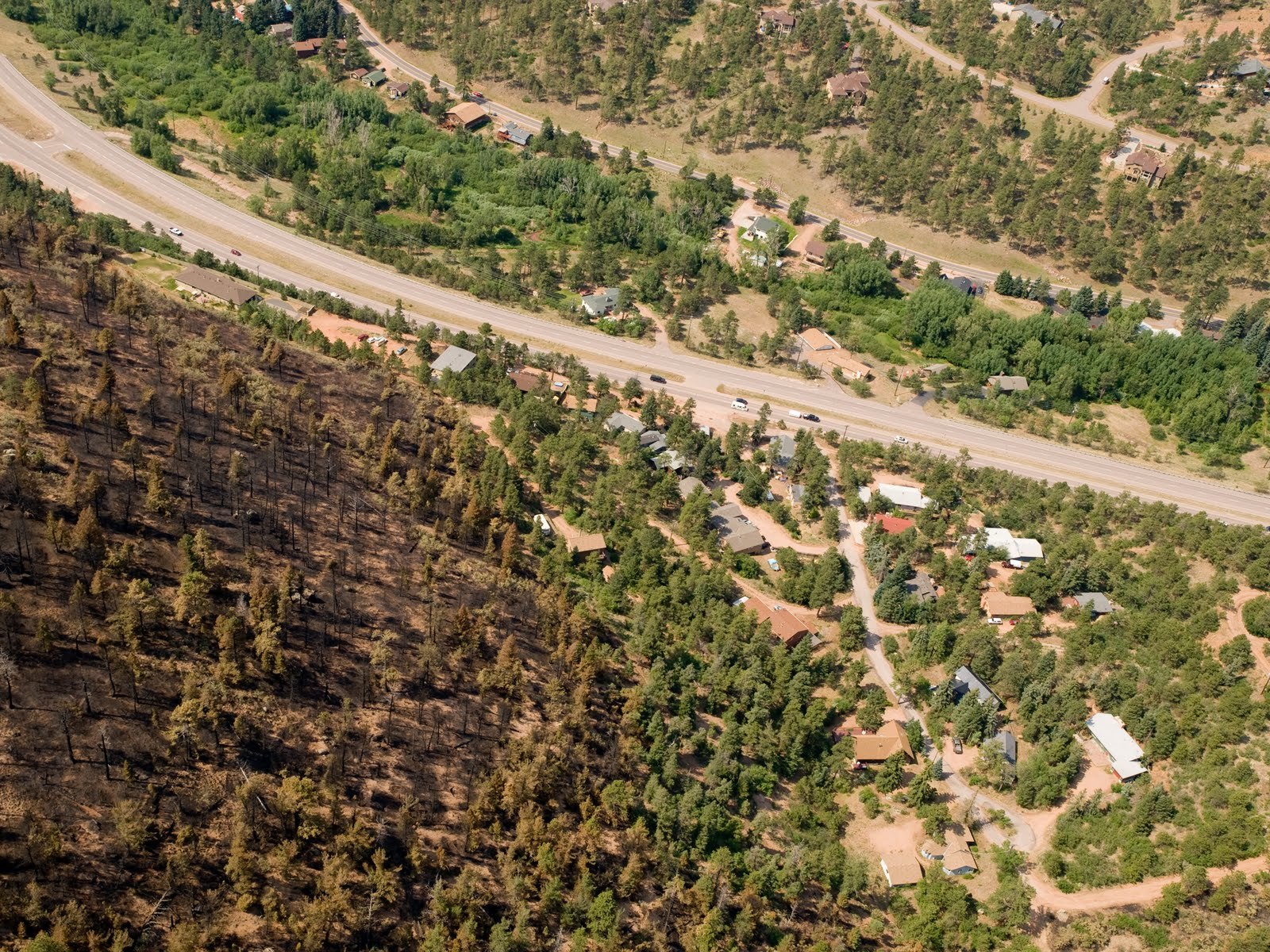Each spring, residents of western towns watch as snow recedes from mountain peaks and local rivers swell. Winter’s transition to spring and then summer brings another sight that westerners have come to expect: plumes of smoke that signal the beginning of fire season.
Across the West, fire season now starts more than six weeks earlier than it did in the 1970s due to warmer and drier conditions. As a consequence of these climatic changes, the U.S. Forest Service estimates that over the past 30 years the average number of acres of forests burned annually has doubled and is expected to double again within the next 30 years. A changing climate and a history of fire suppression on public lands compound to make fires burn more intensely, at higher temperatures and move faster across landscapes.
Western communities of all sizes, from small rural communities to suburban and urban areas, are grappling with the increased threats of ever-more severe wildfires. Much of this threat is concentrated in the wildland urban interface, or WUI, where structural development meets wildland vegetation. The Fire Adapted Community Coalition estimates that the 220 million acres identified as WUI in the United States is populated with over 120 million people living in 50 million homes. This is especially acute for our National Forests where the rapid development of adjacent private lands presents a unique challenge for land managers.
Fire prevention can no longer be fire suppression alone.
These areas face numerous and compounding fire related threats. First, WUIs are highly susceptible to high-severity fire because residents often enjoy the privacy provided by dense forests. Most people don’t want to move to a forest setting and then cut down all of their trees. Second, the plethora of human activities in forested areas, like lawn mowing, leaf blowing, barbeques and fireworks, increases the risk of wildfire ignitions. A recent study showed that nearly 85 percent of wildfires in the U.S. were human caused. That constitutes an additional 40,000 fires per year. Third, the effects of fires are much more costly due to greater risk for loss of life and damage to personal property and infrastructure. Public land managers have no jurisdiction over private property, yet they are often called upon to defend these properties against wildfire, despite the additional cost and danger.
Adding up these social, environmental and economic costs provides a clear reminder of the old adage “an ounce of prevention is worth a pound of cure.” Fire prevention can no longer be fire suppression alone. The past century of fire suppression in the West is part of the reason fires are so dangerous and destructive today, as the exclusion of fire led to the build up fuels in forests.

Photo courtesy of National Interagency Fire Center
Today, most public land managers use small fires to prevent big fires. The Forest Service and other land managers are treating more acres by forest thinning and prescribed fire than ever before.
Managers have learned how fire plays a critical role in most forested ecosystems by consuming fine fuels, recycling nutrients, and reducing competition for resources by preventing over-crowding of trees. Unfortunately, public land managers do not have the authority to manage forest fuels or conduct prescribed burns in the WUI. Nor can they simply require private property owners to reduce fuel loads. In and around the WUI, fuels reduction treatments require hand-thinning of trees and understory brush and hauling it off-site.
While the tools for preventing severe wildfires are well established, implementing them around WUI communities remains a challenge. Fuel reduction treatments around homes can be very expensive, require continued maintenance and are needed across millions of privately owned acres. These costs, combined with low levels of awareness about the likelihood of high-severity fire in their communities, create barriers for homeowners to protect their properties. These constraints have made it difficult for land managers to get enough individuals to treat their properties in order to make a meaningful difference in fire risk across the country.
Local and community engagement is recognized as an important yet often missing component in confronting this threat. Fortunately, as development in WUIs continues unabated, WUI communities are now being asked to play a more active role in mitigating fire risk. By engaging private property owners and initiating cooperative efforts to create and implement adaptation plans at the local level, many of the worst effects of fire can be prevented.

Photo courtesy of National Interagency Fire Center
Several successful national programs help local, state and federal agencies leverage resources and implement wildfire adaptation plans. In 2003, the Healthy Forest Recovery Act empowered communities to create “community wildfire protection plans” (CWPPs) that prioritize public and private land treatments to reduce fire risk in the WUI. As of 2013, more than 17,000 communities had created CWPPs. While this only covers about a quarter of the communities that face wildfire risk, CWPPs are an effective and growing method of reducing fire risk in WUI communities.
The Fire Adapted Communities Coalition (FAC) promotes a holistic approach to local risk reduction. The FAC provides guidelines and synthesizes science pertaining to community-wide and individual fuel management and structure protection. The Coalition also provides resources on how to incorporate wildfire reduction strategies into local building codes and enhance local resources, such as fire departments. This multifaceted approach supports collective responsibility and collaboration to benefit entire communities as they continue to adapt to living in a dynamic, and continuously changing fire-prone environment.
The Firewise Communities program offers communities and individuals more specific instructions about how to maintain defensible space (areas immediately adjacent to homes where fire risk is reduced through thinning small trees, cutting limbs, raking debris and other fuel-reduction techniques) around a home in case a fire does occur. Defensible space also helps prevent homeowners from accidently starting a fire on their property that could spread to the nearby forest. The Firewise Communities program is also designed to help communities leverage federal resources and local knowledge to create fuel reduction plans. This has the added benefit of bringing neighbors together to help each other make their homes safer and address shared common areas.
Continued community involvement, particularly in communities that have experienced wildfire since initiating a risk-reduction program, suggests that this local approach is extremely well received among communities. Evidence of these programs’ success is beginning to emerge as many of the communities that have implemented these plans have since faced fire.
Meanwhile, new research in social science and natural resource management is informing how to broaden the reach of these programs, engaging more citizens and landowners, and retaining the communities and individuals currently participating.
Current efforts in wildfire social sciences and natural resource management policy focus on strategies for providing and supporting community needs and preferences for wildfire adaptation. These studies emphasize that participation, engagement, and relationships determine ultimate effectiveness. There is no one-size-fits-all approach; every community has different capacities and faces different threats. Successful implementation of fire adaptation may look different from place to place but as communities employ these programs, they join a larger network that can share knowledge, experiences and resources.
It’s important to recognize that WUI communities will still experience fire. But with appropriate community planning and cooperative action, they can avoid tragic losses.

